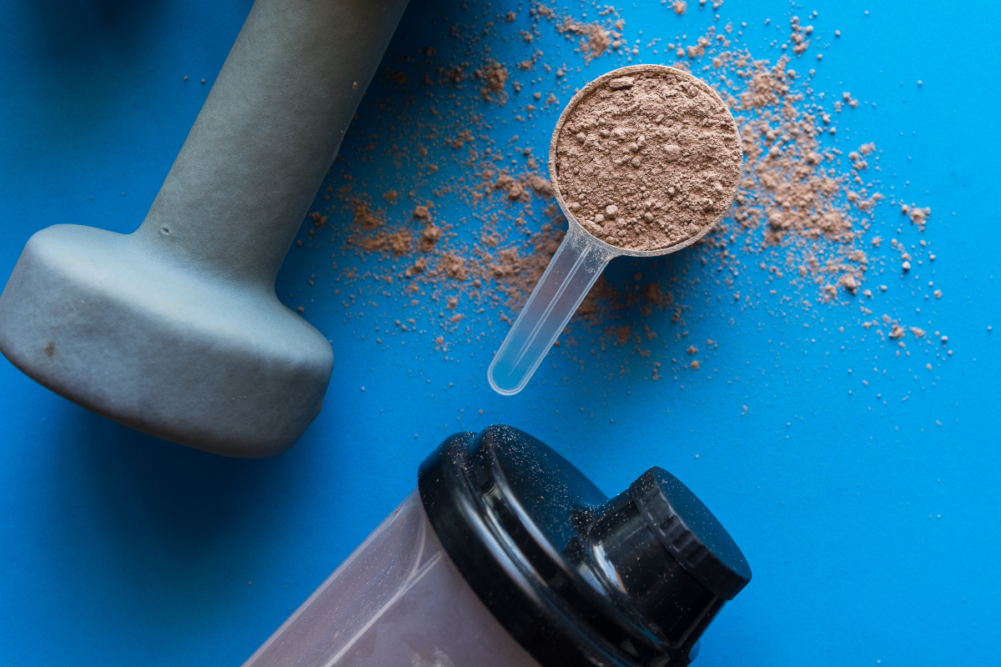KANSAS CITY — Whey protein is widely associated with sports nutrition products because of its taste and amino acid profile. Yet food and beverage formulators may consider whey protein for other applications as well, including those promoting anti-aging and immunity benefits.
Lacprodan Hydro.Rebuild was launched last year by Arla Foods Ingredients, Viby, Denmark. The product is a 100% hydrolyzed whey protein ingredient clinically proven to counteract age-related muscle mass decline.
“It offers highly accessible content of branched-chain amino acids and essential amino acids such as leucine, which are particularly important for muscle synthesis in seniors,” said Laima Liepinyte, nutrition development manager, health and performance nutrition for Arla Foods Ingredients.
In three separate clinical trials on resistance-trained older women, Lacprodan Hydro.Rebuild was shown to offer significant improvements to muscle mass, strength and mobility. Other documented benefits include a slimmer waist and reduced body fat. Lacprodan Hydro.Rebuild may be used in powder applications in products targeted at seniors.
“This is a major growth area due to population aging, which is particularly rapid in the Asia-Pacific region,” Ms. Liepinyte said. “Age brings many health challenges, one of which is a natural decline in skeletal muscle mass and function. This can have a serious effect on mobility and quality of life, so there’s new demand for whey protein products that (in combination with moderate exercise) can help health-conscious seniors lead stronger, healthier, more active lives.”

Many studies have shown the positive effects proteins from milk have on healthy aging, said Durrell Washington, senior product marketing manager for Glanbia Nutritionals and based in Chicago. A study in the Journal of Nutrition showed proteins from milk support continued strength and activity as people age. Another study in The American Journal of Clinical Nutrition found whey protein has been shown to reduce muscle wasting in the elderly.
“Finally, several meta-analyses support greater improvement in strength and muscle mass with whey proteins compared to other sources of proteins,” Mr. Washington said.
Dairy proteins work well in a range of applications, including bars, snacks, functional beverages and powder drink mixes, he said.
Brad Nielsen, director of sales and marketing at Grande Custom Ingredients Group, Fond du Lac, Wis., wrote about whey protein’s anti-aging benefits in a Dec. 15, 2020, blog post. He cited a study in The American Journal of Clinical Nutrition showing adults who added 20 grams of whey protein to their daily diet were able to accelerate the healing of bone fractures and prevent osteoporotic fractures. The blog post also cited the US Census Bureau forecasting about 25% of the US population will be 65 years old by 2060, which compares to less than 17% today.
Mr. Nielsen added glutathione, a tripeptide found in whey protein, affects immunity, acting as an antioxidant. Studies show that increasing the body’s production of glutathione may slow the aging process as old cells are known to contain 20% to 30% less glutathione than young cells.
An online survey conducted by The Hartman Group, Bellevue, Wash., last April found 19% of 2,367 US adults who responded said they already were using functional foods for immunity reasons and 48% said they were interested. The percentages for functional beverages were 13% and 46%.
Arla Foods Ingredients offers Lacprodan Alpha-10, a whey protein with a higher level of cysteine than most other high-quality protein sources.
“Dairy-based ingredients are better known for benefits such as muscle growth and satiety, but they can also play a part in immune health,” Ms. Liepinyte said. “Whey proteins, for example, are rich in the amino acid cysteine, which is essential in the formation of the antioxidant glutathione, which in turn can help support our natural defenses.”
Another dairy ingredient focuses on mental health. NZMP, a brand of Fonterra, is launching milk phospholipids into the US market. They are clinically proven to help manage the effects of stress and are high in whey protein to support muscle build and recovery, according to the company.
“By extending our portfolio into the mental wellness space, we’re helping food brands tap into new consumers’ needs, such as mood enhancement and cognitive performance under stress — issues that have recently amplified due to the pandemic,” said Charlotte Ortiz, global marketing and communications manager at Fonterra, Auckland, New Zealand. “We know this innovation will be a big hit for the market, and our initial industry feedback has been very positive.”
Formulators should not forget about using whey protein in sports nutrition products either.
“Whey protein provides the essential amino acids necessary for athletic recovery along with functional benefits in bars and shakes,” said Corbin Hohl, a scientist for Glanbia Nutritionals. “Whey proteins are highly concentrated in the isolate and concentrate form, providing an easy mixing solution for powdered shakes. This allows a fast and convenient hydration for the consumer with a clean taste. In bars, whey proteins bind water and interact in food matrices to prevent hardening and extend shelf life — all with the added nutritional benefits along with strong consumer recognition.”
Ms. Liepinyte of Arla Foods Ingredients said whey protein is the “king” of protein sources because of its high content of essential amino acids.
“Whey protein hydrolysates (WPHs) in particular can deliver amino acids to the muscles very rapidly, with benefits for growth and recovery,” she said. “In the past, one of the drawbacks of WPHs was that they were known for a bitter, unpalatable taste. The mainstreaming of the sports nutrition sector has made taste and mouthfeel much more important and overcoming this challenge has been a big focus of our recent product development. For example, our 100% whey protein hydrolysate, Lacprodan® Hydro.PowerPro, is 50% less bitter than comparable products, making it ideal for use in powder shakes and ready-to-drink protein beverages.”

